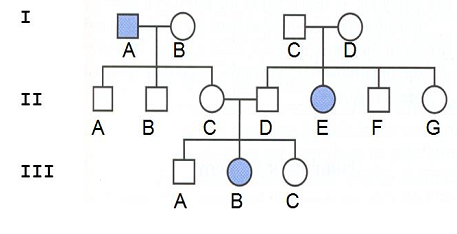Roberts Syndrome is an extremely rare genetic disorder that is characterized by mild to severe prenatal retardation or disruption of cell division, leading to malformation of the bones in the skull, face, arms, and legs. Shown below is a pedigree for a family with Robert’s Syndrome. Based on this pedigree Roberts Syndrome is inherited as a(n) ___________ trait?

A. autosomal dominant
B. autosomal recessive
C. sex-linked dominant
D. sex-linked recessive
E. random
B. autosomal recessive
You might also like to view...
Compare and contrast DNA synthesis in prokaryotes and eukaryotes. What will be an ideal response?
Which kingdom possesses unicellular animal-like species and unicellular plantlike species?
A) Animalia B) Protista C) Fungi D) Plantae
Respond to the following statements in reference to the four regions of a nephron listed below.
A. Filtration of the blood occurs in association with this structure. B. The glomerular capillaries are intimately associated with this structure. C. Sodium ions are actively transported out from this region. D. This region of the tubule is impermeable to sodium exit. E. Permeability to water is regulated by antidiuretic hormone in this structure.
Before ARF transcription factors can trigger auxin-induced gene expression, what must happen?
A. Auxin binds to TIR1, an auxin receptor. B. Auxin binds to ubiquitin, a degradation tag. C. Ubiquitin must destroy TIR1 to release Aux/IAA proteins. D. Auxin must bind to the ARF transcription factor. E. Auxin degrades Aux/IAA proteins which repress ARF transcription factors.